Arsenio G. Lampiao
Legal Analyst, Worldwide Field Operations
Mozambique In-Country Representative



 Biodiversity (B) Avoided Carbon
Biodiversity (B) Avoided CarbonBiodiversity is threatened worldwide by the loss of natural habitats and climate change. Protecting biodiversity and reducing greenhouse gas emissions to prevent and manage climate change are complementary goals. While restoration of ecosystems provide habitat for biodiversity, increased forest carbon sequestration may not directly yield increased biodiversity. Protection of ecosystems can safeguard both biodiversity and sequestered carbon. The projects undertaken by PAC will consider carbon and biodiversity goals as intertwined but not necessarily correlated directly. PAC combines the components of directly measured carbon sequestration and contemporaneous surveys of biodiversity in unique forest carbon portfolios that value each component separately and as a unique mosaic of features specific to each project area. The mosaics of biodiversity and carbon sequestration represent a win-win outcome for all stakeholders. The sealed Biosphere Box represents retained ecosystem carbon by restoration, protection and conservation of forest areas for the purposes of enhanced biodiversity in a project area.
Additional Reading
2017
Ali, Arshad, and En-Rong Yan. “Relationships between biodiversity and carbon stocks in forest ecosystems: a systematic literature review.” Tropical Ecology 58, no. 1 (2017).
Griscom, Bronson W., Rosa C. Goodman, Zuzana Burivalova, and Francis E. Putz. “Carbon and biodiversity impacts of intensive versus extensive tropical forestry.” Conservation Letters (2017).
Morriën, Elly, S. Emilia Hannula, L. Basten Snoek, Nico R. Helmsing, Hans Zweers, Mattias De Hollander, Raquel Luján Soto et al. “Soil networks become more connected and take up more carbon as nature restoration progresses.” Nature communications 8 (2017): 14349.
2016
Dayamba, Sidzabda Djibril, Houria Djoudi, Mathurin Zida, Louis Sawadogo, and Louis Verchot. “Biodiversity and carbon stocks in different land use types in the Sudanian Zone of Burkina Faso, West Africa.” Agriculture, Ecosystems & Environment 216 (2016): 61-72.
Eitelberg, David A., Jasper van Vliet, Jonathan C. Doelman, Elke Stehfest, and Peter H. Verburg. “Demand for biodiversity protection and carbon storage as drivers of global land change scenarios.” Global Environmental Change 40 (2016): 101-111.
 Gorilla Habitat (G) Avoided Carbon
Gorilla Habitat (G) Avoided CarbonWhen conservation of forests are tied to protection of endangered species forest destruction is limited. As a consequence, efflux of CO2 to the atmosphere from deforestation and soil disturbances are retained. The same avoidance mechanism is provided by species conservation as for Indigenous Peoples. The sealed Biosphere Box signifies the retention of ecosystem carbon by conserving and protecting areas for Gorilla habitat.
Additional Reading
2017
Imani, Gérard, Faustin Boyemba, Simon Lewis, Nsharwasi Léon Nabahungu, Kim Calders, Louis Zapfack, Bernard Riera, Clarisse Balegamire, and Aida Cuni-Sanchez. “Height-diameter allometry and above ground biomass in tropical montane forests: Insights from the Albertine Rift in Africa.” PloS one12, no. 6 (2017): e0179653.
2016
Sheil, Douglas, Brenton Ladd, Lucas CR Silva, Shawn W. Laffan, and Miriam Van Heist. “How are soil carbon and tropical biodiversity related?.” Environmental Conservation 43, no. 3 (2016): 231-241.
2014
Fongnzossie, Evariste Fedoung, Denis Jean Sonwa, Victor Kemeuze, Phillipe Auzel, and Bernard‐Aloys Nkongmeneck. “Above‐ground carbon assessment in the Kom‐Mengamé forest conservation complex, South Cameroon: Exploring the potential of managing forests for biodiversity and carbon.” In Natural Resources Forum, vol. 38, no. 3, pp. 220-232. 2014.
2013
Petre, Charles-Albert, Nikki Tagg, Barbara Haurez, Roseline Beudels-Jamar, Marie-Claude Huynen, and Jean-Louis Doucet. “Role of the western lowland gorilla (Gorilla gorilla gorilla) in seed dispersal in tropical forests and implications of its decline/Le rôle du gorille des plaines de l’Ouest (Gorilla gorilla gorilla) dans la dissémination des graines en forêts tropicales et les implications de son déclin.” Biotechnologie, Agronomie, Société et Environnement 17, no. 3 (2013): 517.
 Methane (CH4)
Methane (CH4)Methane is emitted during the production and transport of coal, natural gas, and oil. Methane emissions also result from livestock and other agricultural practices and by the decay of organic waste in municipal solid waste landfills. The CH4 profile as a greenhouse gas (GHG) is shown below with other GHG’s and their warming potential, atmospheric lifetime, molecular weight and radiative forcing. Note that a full GHG budget would include measurements for all of the gases listed, however, rarely are such full budgets measured in practice. PαC intends to increase the number of GHG’s directly measured by the System of Systems network resulting in a multi-gas GHG emissions measurement and reduction approach.
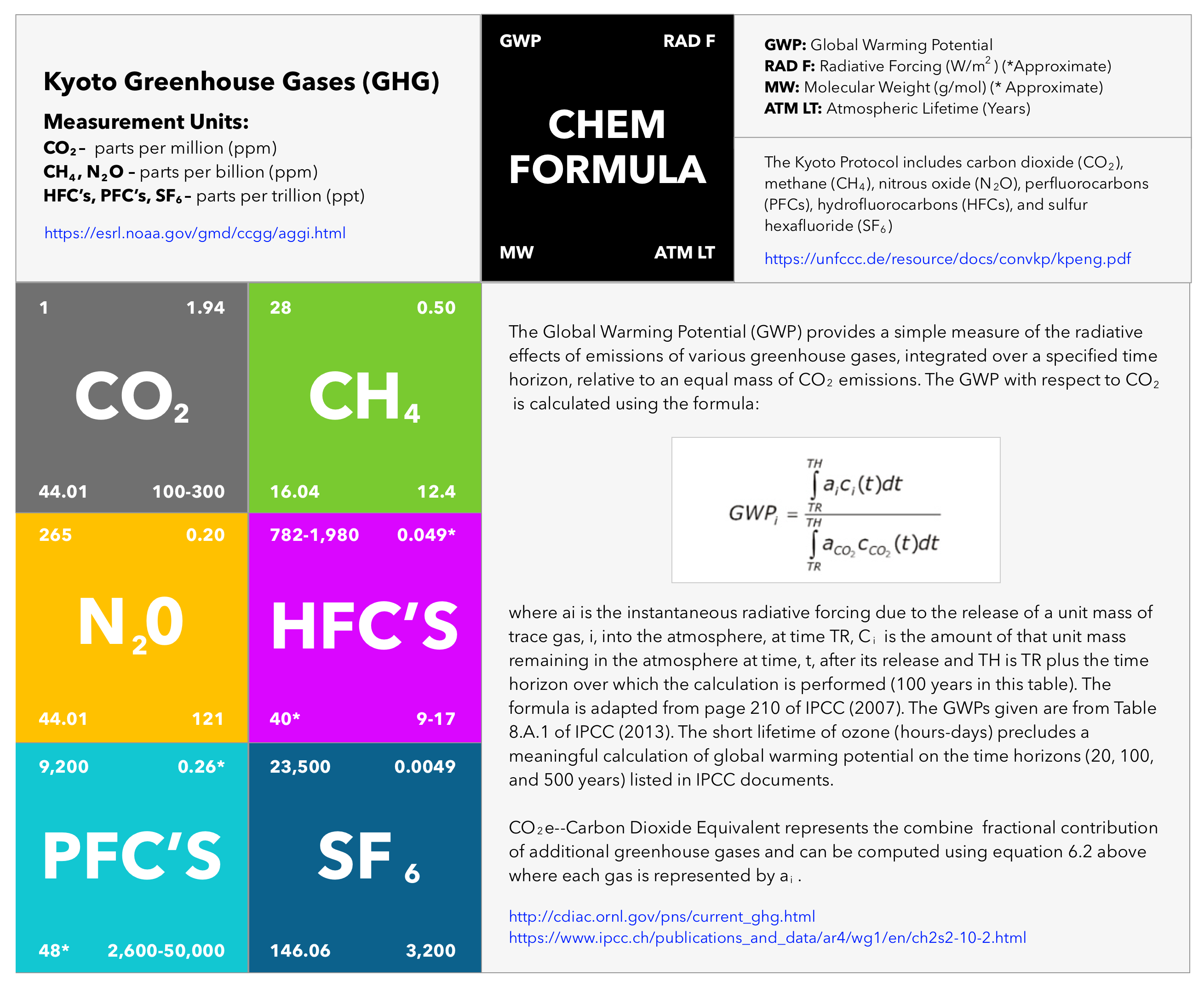
Additional Reading
Houweling, Sander, Peter Bergamaschi, Frederic Chevallier, Martin Heimann, Thomas Kaminski, Maarten Krol, Anna M. Michalak, and Prabir Patra. “Global inverse modeling of CH 4 sources and sinks: an overview of methods.” Atmospheric Chemistry and Physics 17, no. 1 (2017): 235-256.
Saunois, Marielle, Philippe Bousquet, Benjamin Poulter, Anna Peregon, Philippe Ciais, Josep G. Canadell, Edward J. Dlugokencky et al. “Variability and quasi-decadal changes in the methane budget over the period 2000-2012.” Atmospheric Chemistry and Physics Discussions (2017): 1-39.
https://www.epa.gov/ghgemissions/overview-greenhouse-gases
http://www.ipcc.ch/publications_and_data/ar4/wg1/en/ch7s7-4-1.html
 Indigenous Peoples (IP) Avoided Carbon
Indigenous Peoples (IP) Avoided CarbonIndigenous Peoples collectively-managed territories and local communities store about one quarter of the carbon stored aboveground in the world’s tropical forests. The intimate relationship between Indigenous Peoples and their immediate environment is characterized by minimal impact of their livelihoods on their ecological surroundings. Thus, enabling Indigenous Peoples to remain on their land and restoring land rights to displaced Indigenous Peoples will likely result in avoidance of CO2 emissions that occur during forest destruction in addition to efflux of CO2 from below ground carbon stores released when above ground biomass is removed from an area.
The Biosphere Box with a seal represents Indigenous Peoples and their persistence within an ecosystem as an avoidance offset that can be measured by PαC across an area that is currently inhabited or will be occupied by Indigenous Peoples. Project revenues may be used to secure or acquire land for Indigenous Peoples and is of high importance to the mission of PαC.
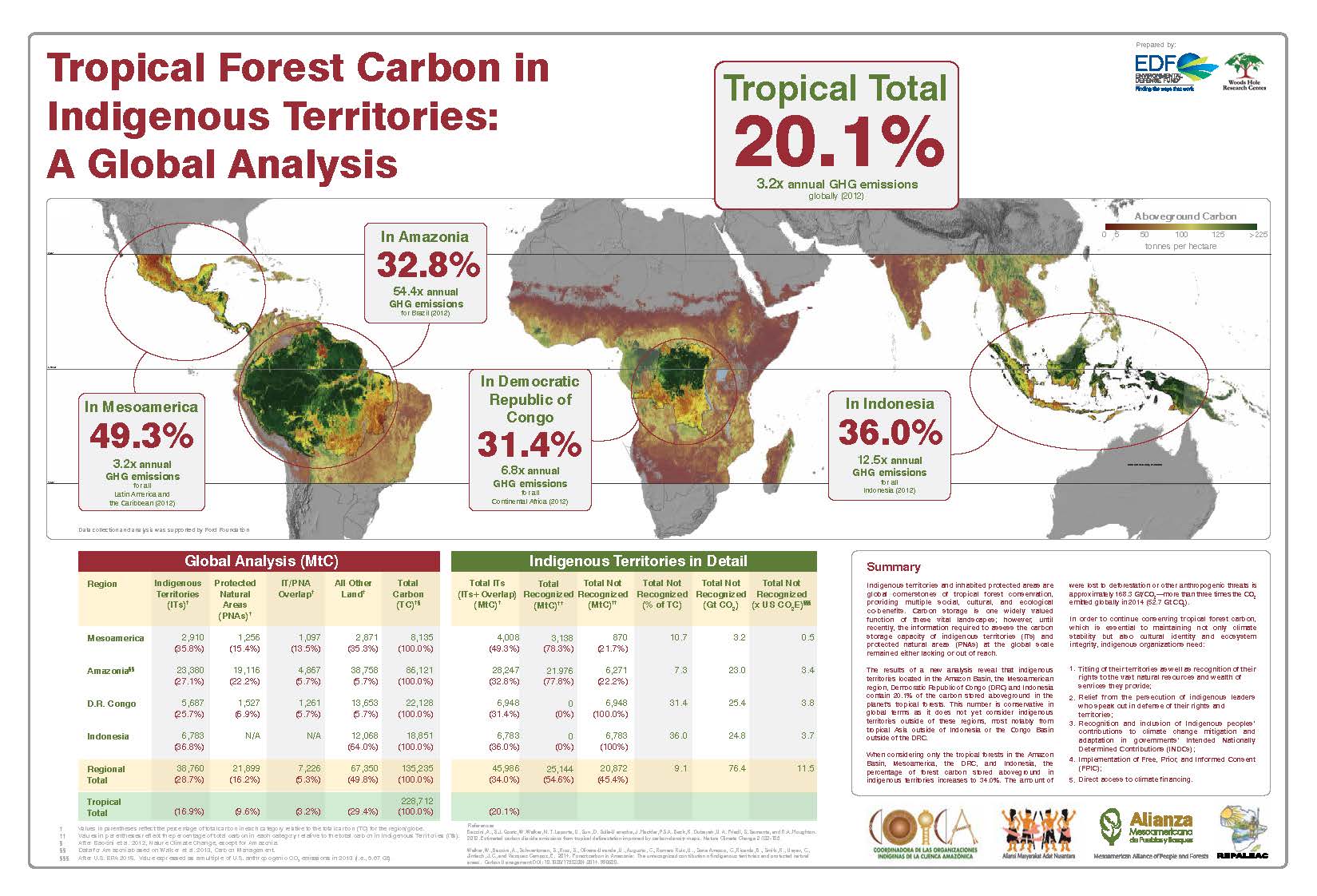
Additional Reading
2017
Asante, Eric Appau, Stephen Ababio, and Kwadwo Boakye Boadu. “The Use of Indigenous Cultural Practices by the Ashantis for the Conservation of Forests in Ghana.” SAGE Open 7, no. 1 (2017): 2158244016687611.4
Marinaro, Sofía, H. Ricardo Grau, Néstor Ignacio Gasparri, Tobias Kuemmerle, and Matthias Baumann. “Differences in production, carbon stocks and biodiversity outcomes of land tenure regimes in the Argentine Dry Chaco.” Environmental Research Letters 12, no. 4 (2017): 045003.
Pagdee, Adcharaporn. “Community forest: a local attempt in natural resource management, economic value of ecosystem services, and contribution to local livelihoods.” Asia-Pacific Journal of Science and Technology 13, no. 10 (2017): 1129-1134.
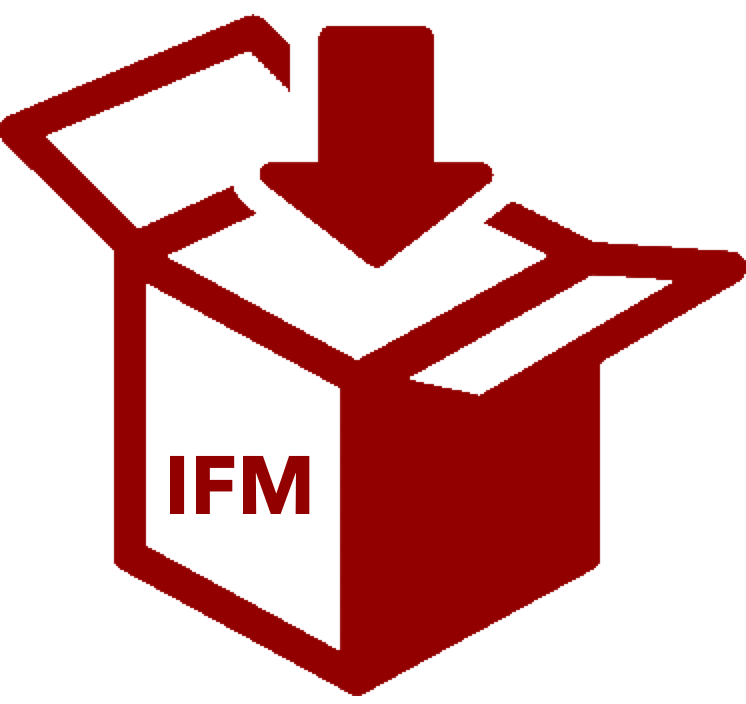 Improved Forestry Management (IFM) Sequestration
Improved Forestry Management (IFM) SequestrationActivities related to improved forest management are those implemented on forests remaining as forests. Various forest management activities can be changed that could increase carbon stocks or reduce greenhouse gas emissions, but only a subset of these activities make a measureable difference to the long-term increase in greenhouse gas benefits compared to business-as-usual practices. Improved forest management for carbon offset projects may include:
PAC will apply the direct measurement approach to improved forest management project areas.
Additional Reading
Bösch, Matthias, Peter Elsasser, Joachim Rock, Sebastian Rüter, Holger Weimar, and Matthias Dieter. “Costs and carbon sequestration potential of alternative forest management measures in Germany.” Forest Policy and Economics 78 (2017): 88-97.
Bravo, Felipe, Miren del Río, Andrés Bravo-Oviedo, Ricardo Ruiz-Peinado, Carlos del Peso, and Gregorio Montero. “Forest Carbon Sequestration: The Impact of Forest Management.” Managing Forest Ecosystems: The Challenge of Climate Change (2017): 251-275.
Cerutti, Paolo Omar, Daniel Suryadarma, Robert Nasi, Eric Forni, Vincent Medjibe, Sebastien Delion, and Didier Bastin. “The impact of forest management plans on trees and carbon: Modeling a decade of harvesting data in Cameroon.” Journal of Forest Economics 27 (2017): 1-9.
Pukkala, Timo. “Does management improve the carbon balance of forestry?.” Forestry: An International Journal of Forest Research 90, no. 1 (2017): 125-135.
Tadesse, Wubalem, Mulugeta Lemenih, and Shiferaw Alem. “Forest Management in the Sahel and Ethiopian Highlands and Impacts on Climate Change.” Managing Forest Ecosystems: The Challenge of Climate Change (2017): 429-445.
 Afforestation (AF) Sequestration
Afforestation (AF) SequestrationAfforestation, or tree establishment on non-forested land, is a management option for increasing terrestrial carbon sequestration compared to non-forested land use. Afforestation increases carbon storage in aboveground pools compared to purely agricultural, developed or degraded land. One typical form of afforestation, tree plantations, are defined as forest stands that have been established artificially either on land that has not supported forests previously or on land that while once forested are converted to tree plantations rather than reforested. The afforestation has the potential to contribute to carbon storage, directly through accumulation in biomass and soil and indirectly, by providing an alternative to fossil fuel for communities. The use of biomass as a renewable source of fuel can create a mechanism for offsetting increased atmospheric CO2 and also provides an incentive for improving forest management. The graphic below shows an idealized afforestation project on land that was not not previously forested.
Additional Reading
DengDeng, Lei, Qi‐sheng Han, Chao Zhang, Zhuang‐sheng Tang, and Zhou‐ping Shangguan. “Above‐Ground and Below‐Ground Ecosystem Biomass Accumulation and Carbon Sequestration with Caragana korshinskii Kom Plantation Development.” Land Degradation & Development 28, no. 3 (2017): 906-917., Lei, and Zhou‐ping Shangguan. “Afforestation drives soil carbon and nitrogen changes in China.” Land Degradation & Development 28, no. 1 (2017): 151-165.
Laclau, P., E. Andenmatten, F. J. Letourneau, and G. Loguercio. “Carbon Sequestration of Ponderosa Pine Plantations in Northwestern Patagonia.” Managing Forest Ecosystems: The Challenge of Climate Change (2017): 329-349.
Nawaz, Muhammad Farrakh, Syed Athar Abbas Shah, Sadaf Gul, Shazia Afzal, Irfan Ahmad, and Abdul Ghaffar. “CARBON SEQUESTRATION AND PRODUCTION OF Eucalyptus camaldulensis PLANTATIONS ON MARGINAL SANDY AGRICULTURAL LANDS.” Pak. J. Agri. Sci 54, no. 2 (2017): 335-342.
Rahman, Md Masudur, Teresa G. Bárcena, and Lars Vesterdal. “Tree species and time since afforestation drive soil C and N mineralization on former cropland.” Geoderma 305 (2017): 153-161.

 Agroforestry (GF) Sequestration
Agroforestry (GF) SequestrationAgroforestry is defined as a land-use system that involves the deliberate retention, introduction or mixture of trees or other woody perennials with agricultural crops, pastures and/or livestock to exploit the ecological and economic interactions of the different components of the project area. While agroforestry is widely practiced and acknowledged to have positive benefits for carbon sequestration there is a paucity of quantitative data on specific projects. The main advantage of agroforestry is the potential for carbon sequestration while leaving large areas for agricultural production resulting in food security, economic diversification and community jobs. PAC will provide the same level of direct measurement protocols for agroforestry as for reforestation. Agroforestry may also provide benefits to manage methane (CH4) and nitrous oxide (N2O) emissions.
An idealized agroforestry project is depicted below. The graphic shows agriculture (maize) cocoa and banana production with vertical fluxes for the primary greenhouse gases CO2, CH4 and N2O.
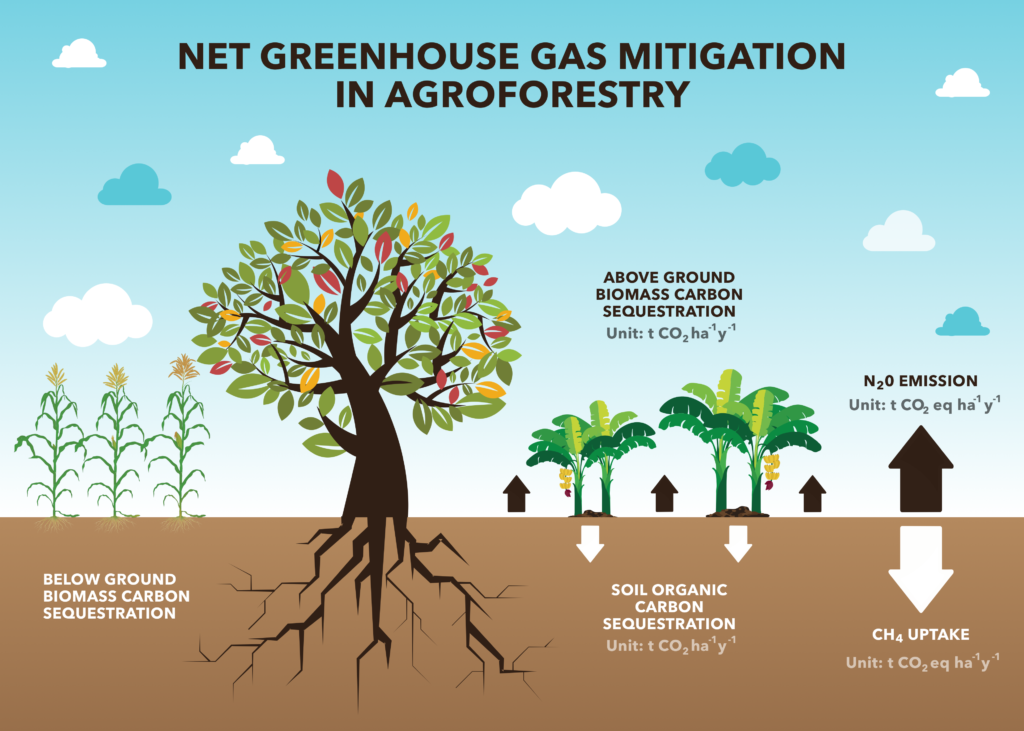
Additional Reading
2017
Abbas, Farhat, Hafiz Mohkum Hammad, Shah Fahad, Artemi Cerdà, Muhammad Rizwan, Wajid Farhad, Sana Ehsan, and Hafiz Faiq Bakhat. “Agroforestry: a sustainable environmental practice for carbon sequestration under the climate change scenarios—a review.” Environmental Science and Pollution Research (2017): 1-15.
Cardinael, Rémi, Tiphaine Chevallier, Aurélie Cambou, Camille Béral, Bernard G. Barthès, Christian Dupraz, Céline Durand, Ernest Kouakoua, and Claire Chenu. “Increased soil organic carbon stocks under agroforestry: A survey of six different sites in France.” Agriculture, Ecosystems & Environment 236 (2017): 243-255.
Chen, Chunfeng, Wenjie Liu, Xiaojin Jiang, and Junen Wu. “Effects of rubber-based agroforestry systems on soil aggregation and associated soil organic carbon: Implications for land use.” Geoderma 299 (2017): 13-24.
Vanderhaegen, Koen, Lore Geeraert, Jan Mertens, Maarten Van Geel, Raf Aerts, Olivier Honnay, Bruno Verbist, Bart Muys, and Matthias De Beenhouwer. “Biodiversity and carbon storage co-benefits of coffee agroforestry across a gradient of increasing management intensity in the SW Ethiopian highlands.” (2017).
2016
Asase, Alex, and Daniel A. Tetteh. “Tree diversity, carbon stocks, and soil nutrients in cocoa-dominated and mixed food crops agroforestry systems compared to natural forest in southeast Ghana.” Agroecology and Sustainable Food Systems 40, no. 1 (2016): 96-113.
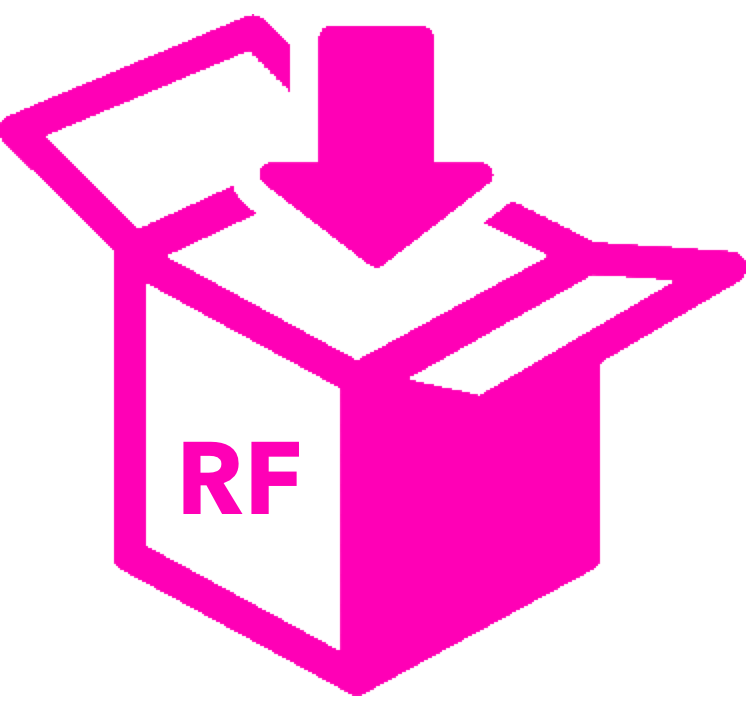
Reforestation refers to the planting of forests, either mechanically or by natural regeneration methods, on lands which have, historically, previously contained forests but which have been converted to some other use. Reforestation may also refer to planting of trees in areas that do not reflect a change in land-use designation. In any case, when trees regrow carbon is sequestered as above and below ground living biomass. Soil organic stores may also be increased over time. Direct measurement of the above ground and below ground carbon flux is required to quantify forest carbon sequestration.
Additional Reading
Locatelli, Bruno, Carla P. Catterall, Pablo Imbach, Chetan Kumar, Rodel Lasco, Erika Marín‐Spiotta, Bernard Mercer, Jennifer S. Powers, Naomi Schwartz, and Maria Uriarte. “Tropical reforestation and climate change: beyond carbon.” Restoration Ecology 23, no. 4 (2015): 337-343.
Schwartz, Naomi Beth, María Uriarte, Ruth DeFries, Victor Gutierrez-Velez, and Miguel Pinedo-Vasquez. “Land-use dynamics influence estimates of carbon sequestration potential in tropical second-growth forest.” Environmental Research Letters (2017).
Sohng, Jaeeun, B. M. P. Singhakumara, and Mark S. Ashton. “Effects on soil chemistry of tropical deforestation for agriculture and subsequent reforestation with special reference to changes in carbon and nitrogen.” Forest Ecology and Management 389 (2017): 331-340.
Hobbs, Trevor J., Craig R. Neumann, Wayne S. Meyer, Travis Moon, and Brett A. Bryan. “Models of reforestation productivity and carbon sequestration for land use and climate change adaptation planning in South Australia.” Journal of environmental management 181 (2016): 279-288.
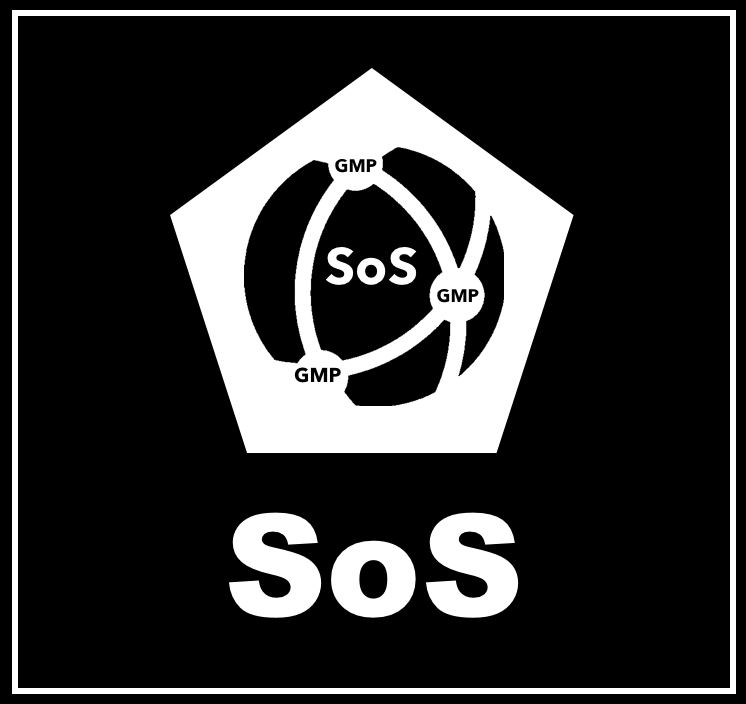 The System of Systems (SoS)
The System of Systems (SoS)The SoS is the integrated operations platform for measurement, verification and accounting for all sensor networks, including the Global Monitor Platform (GMP) that provide determination of net flux for sequestered forest carbon. The SoS employs large connected calibrated networks of carbon sensors, drone and satellite data (LIDAR, GHGsat) for project compliance and verification. Typical components of the SoS include eddy covariance towers, soil accumulation chambers, soil probes, micrometeorological sensors, 12,13CO2, CH4 and other analyzers according to a project plan. A field module for measurement of 14CO2 is under development and field testing. Flask samples, including time integrated air sampling, will be conducted for all sites in addition to the 14CO2 field module.
The GMP is an integrated multi-analyzer system that collects and synchronously analyzes gas streams from the free atmosphere, the soil atmosphere or from gases extracted from aquatic sources. The GMP houses sealed standard reference gases linked to external international references to ensure that analyzer results are comparable and equivalent for all analyzers regardless of location. The reference and GHG accounting compliance system of the GMP is transparent to third party verifiers and to stakeholders.
The GMP and SoS components can be described as PαC’s Direct Measurement Forest Carbon Protocol (DMFCP). The DMFCP clearly differentiates our approach from traditional forest carbon protocols that rely upon estimation, models, incomplete carbon accounting and sparse measurement of above ground biomass. The DMFCP is applied to all GHG’s also establishing direct measurement capabilities not offered by traditional GHG protocols. See pemcarbon.com for additional information.
Additional Reading
Marino, Bruno DV. “System of systems for monitoring greenhouse gas fluxes.” U.S. Patent 8,595,020, issued November 26, 2013.
 QuantumQarbon
QuantumQarbonDirect measurement of the rare forms for carbon dioxide track the source and magnitude of additions and subtractions of CO2 to the atmosphere. QuantumQarbon® emphasizes the nature and importance of high frequency synchronous field measurement for both 13CO2 and 14CO2 while also measuring “bulk” carbon dioxide as 12CO2. The carbon 13 and 14 forms of CO2 although consisting of very small, discrete amounts compared to 12CO2, are observable at the one-part-in-one-thousand and one-part-in-one-trillion levels, respectively. Despite the small amounts in the atmosphere for both rare forms of CO2 they can be measured with high precision. The GMP was designed to increase the data rate for both isotopic forms, particularly for 14CO2, as no high precision 14CO2 analyzer is available commercially. QuantumQarbon® tracks forest carbon cycling and loss of carbon from soils buried in forest ecosystems. The measurement of QuantumQarbon® across the geographic boundary of a project also provides the foundation for new and innovative forest carbon sequestration offset products. In addition, 14CO2 is the only direct conservative tracer of the interaction of fossil fuel CO2 with our planetary forest ecosystems.\
Additional Reading
Marino, Bruno DV, Michelle Bright, and Glen Gronniger. “Design and package of a 14CO2 field analyzer: the Global Monitor Platform (GMP).” In SPIE Optical Engineering+ Applications, pp. 81560E-81560E. International Society for Optics and Photonics, 2011.
The two panels below describe 13CO2 and 14CO2 background information. Please click here for a detailed description of the QuantumQarbon species.

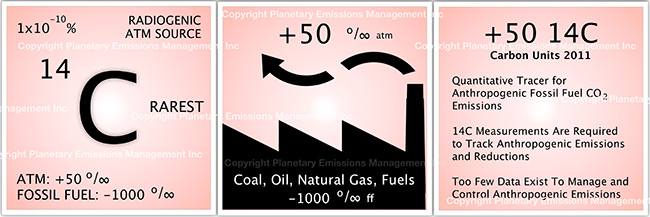
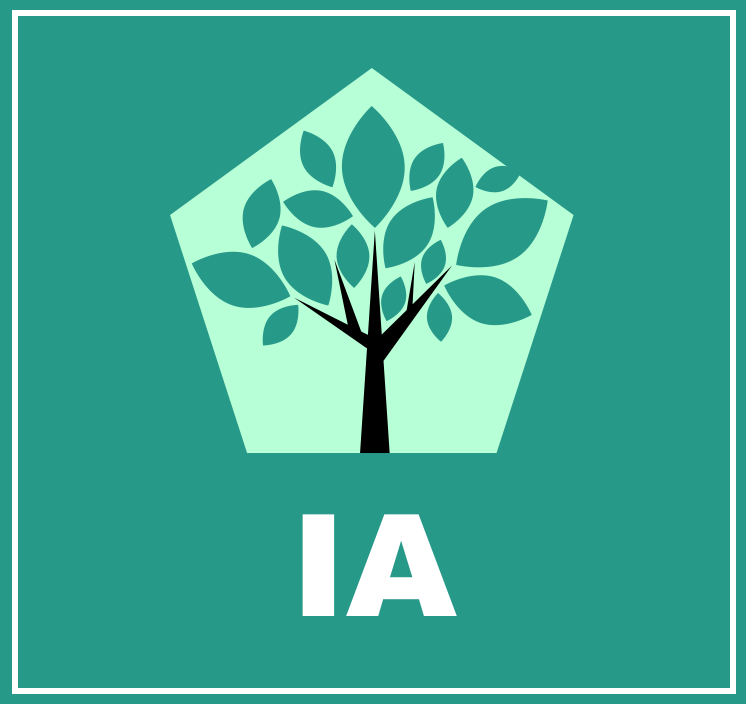 Carbon isotopic analysis (IA)
Carbon isotopic analysis (IA)Analysis of plant and soil samples for carbon isotope ratios (e.g., 13/12C, 14/12C) can reveal patterns of carbon cycling related to water use efficiency of plants and dynamics of soil carbon cycling. PαC projects will routinely collect plant,water and soil samples from selected sites of the project.
Additional Reading:
Gurmesa, Geshere Abdisa, Xiankai Lu, Per Gundersen, Yunting Fang, Qinggong Mao, Hao Chen, and Jiangming Mo. “Nitrogen input 15 N signatures are reflected in plant 15 N natural abundances in subtropical forests in China.” Biogeosciences 14, no. 9 (2017): 2359.
Roberts, Patrick, Scott A. Blumenthal, Wolfgang Dittus, Oshan Wedage, and Julia A. Lee‐Thorp. “Stable carbon, oxygen, and nitrogen, isotope analysis of plants from a South Asian tropical forest: Implications for primatology.” American Journal of Primatology 79, no. 6 (2017).
Wang, Yafeng, Liding Chen, Yang Gao, Shibo Chen, Weiliang Chen, Zhuo Hao, Junjie Jia, and Ning Han. “Geochemical isotopic composition in the Loess Plateau and corresponding source analyses: A case study of China’s Yangjuangou catchment.” Science of the Total Environment 581 (2017): 794-800.
Coleman, David C., ed. Carbon isotope techniques. Academic Press, 2012.


HFCs and PFCs are used primarily for energy-consuming applications such as refrigeration, air conditioning and heat pumps, and building and appliance insulation. Unlike anthropogenic greenhouse gases emitted as an immediate consequence of the burning of fossil fuels to generate energy, most HFCs and PFCs are contained within equipment or products for periods ranging from a few months (e.g., in aerosol propellants) to years (e.g., in refrigeration equipment) to decades (e.g., in insulating foams). Thus, emissions significantly lag consumption and, because HFC systems are relatively new, emissions will continue to grow as new sources are produced. Both the quantities used and patterns of use of HFCs, and PFCs are changing as they are phased out under the Montreal Protocol of 1999.

Additional Reading:
Working Group III: Mitigation
http://www.ipcc.ch/ipccreports/tar/wg3/index.php?idp=144
Working Group I: The Scientific Basis
https://www.ipcc.ch/ipccreports/tar/wg1/137.htm
Heath, Eric A. “Amendment to the Montreal Protocol on Substances that Deplete the Ozone Layer (Kigali Amendment).” International Legal Materials 56, no. 1 (2017): 193-205.
Purohit, Pallav, and Lena Höglund-Isaksson. “Global emissions of fluorinated greenhouse gases 2005–2050 with abatement potentials and costs.” Atmospheric Chemistry and Physics 17, no. 4 (2017): 2795-2816.
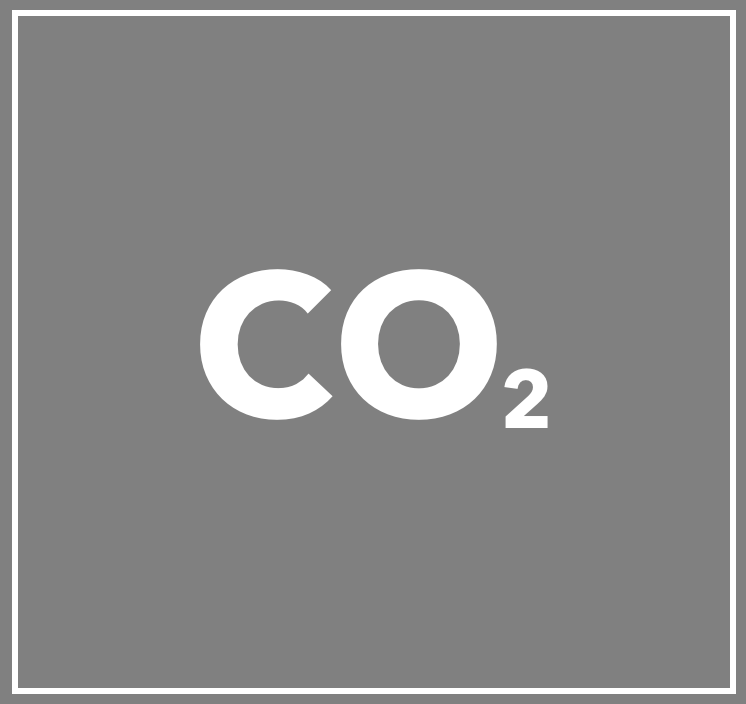 Carbon Dioxide (CO2)
Carbon Dioxide (CO2)CO2 is the basis of life on Earth. While CO2 courses through the planetary fabric of earth, water, plants and the atmosphere, it also runs through our lives as the defining anthropogenic imprint on the world humanity has created. Small amounts of CO2 added to the atmosphere since the industrial revolution have enhanced surface warming and the dynamics of the Earth system. Small changes in the climate system can wield a host of disruptions to the lifeways of society involving food and water availability, energy production and our economic systems. The CO2 profile as a greenhouse gas (GHG) is shown below with other GHG’s and their warming potential, atmospheric lifetime, molecular weight and radiative forcing. Note that a full GHG budget would include measurements for all of the gases listed, however, rarely are such full budgets measured in practice. PαC intends to increase the number of GHG’s directly measured by the System of Systems network resulting in a multi-gas GHG emissions measurement and reduction approach.

Additional Reading
Campbell, J. E., J. A. Berry, U. Seibt, Steven J. Smith, S. A. Montzka, T. Launois, S. Belviso, L. Bopp, and M. Laine. “Large historical growth in global terrestrial gross primary production.” Nature 544, no. 7648 (2017): 84-87.
Lovenduski, Nicole S., and Gordon B. Bonan. “Reducing uncertainty in projections of terrestrial carbon uptake.” Environmental Research Letters 12, no. 4 (2017): 044020.
Ussiri, David AN, and Rattan Lal. “Introduction to Global Carbon Cycling: An Overview of the Global Carbon Cycle.” In Carbon Sequestration for Climate Change Mitigation and Adaptation, pp. 61-76. Springer International Publishing, 2017.
http://www.globalcarbonatlas.org/en/content/welcome-carbon-atlas
https://www.ipcc.ch/publications_and_data/ar4/wg1/en/ch7s7-3.html
 Working Forest Carbon Sequestration
Working Forest Carbon SequestrationA Working Forest (WF) is harvested for timber production on a periodic basis while forests are regenerated in other areas previously harvested. Working forests are defined as forests that are actively managed to generate revenue from multiple sources, including sustainably produced timber and other ecosystem services. Working forests are not converted to other land uses such as residential development. Humanity utilizes wood products for cooking and heating fuel construction of homes, paper and countless other uses. As population grows over the coming decades the demand for forest products will increase. How can we balance the need for forest products with the goals of forest conservation and carbon sequestration? The project area of a WF is likely to have portions of forest that are simultaneously being harvested, rapidly regrowing and reaching maturity. In many countries the convergence of humanitarian needs for forest products and the needs of fauna for subsistence result in a loss of both. How can we manage the increasing pressure on forests?
PαC will employ the same methods for direct measurement of net forest carbon sequestration across a WF project area as used for other forest carbon sequestration projects (e.g., conservation). In the case of WF’s the export of wood as timber and conversion of timber to long-lived wood products including carbon storage in buildings can also be considered in the net carbon sequestered over selected time periods. PαC direct project measurements will provide data to make informed decisions about how to cultivate forests for climate-change mitigation and for material supply of humanitarian usage. The direct measurement of forest response to climate change will help answer the question of whether it is better to harvest or conserve trees, and how much, across a project area. The PαC WF management strategy is to increase both forest stocks and timber harvest through a variety of measures such as planting community forests for humanitarian needs, managing forest species for improved growth, carefully selecting trees for harvest, substitution of wood for steel and cement, and actively replanting forest areas that have been damaged by extreme weather events, disease or fire. WF projects can actively contribute to climate change mitigation and to humanitarian needs based on direct measurement as employed by PαC.
Additional Reading
Roise, J. P., K. Harnish, M. Mohan, H. Scolforo, J. Chung, B. Kanieski, G. P. Catts, J. B. McCarter, J. Posse, and T. Shen. “Valuation and production possibilities on a working forest using multi-objective programming, Woodstock, timber NPV, and carbon storage and sequestration.” Scandinavian Journal of Forest Research 31, no. 7 (2016): 674-680.
Colgan, Charles, Malcolm L. Hunter, Brian McGill, and Aaron Weiskittel. “Managing the middle ground: forests in the transition zone between cities and remote areas.” Landscape ecology 29, no. 7 (2014): 1133.
Smith, Joyotee, and Sara J. Scherr. Forest carbon and local livelihoods: assessment of opportunities and policy recommendations. No. CIFOR Occasional Paper no. 37. 2002.
Working Forest Criterion. Yale University, School of Forestry and Environmental Studies.
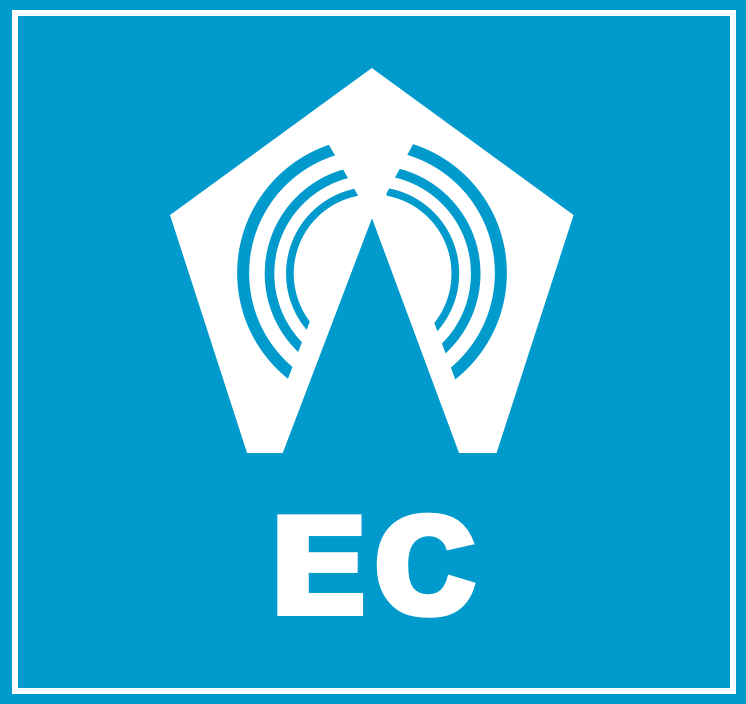 Eddy Covariance (EC)
Eddy Covariance (EC)The EC method measures gas fluxes in and out of an ecosystem. The EC method is the most accurate and direct approach available for determining the dynamic net ecosystem exchange and sequestered carbon for a forest project area. The method is based on direct and fast measurements (e.g., 10 Hz) of actual gas transport characterized by a three dimensional wind field in real time. The concentration of the gas of interest (e.g., CO2, 13CO2 and 14CO2) is measured concomitantly resulting in flux of the gas. In the case of QuantumQarbon, the isotopic forms of CO2, flux for each isotope is determined (e.g., 13CO2, 14CO2) and employed to create unique DMFCP carbon products. The EC method has been applied worldwide under remote and harsh conditions employing solar power for months without maintenance. The EC method is deployed as a network of ES systems across the project are and operated by the System of Systems.
Additional Reading
Fisher, Rebecca E., James L. France, David Lowry, Mathias Lanoisellé, Rebecca Brownlow, John A. Pyle, Michelle Cain et al. “Measurement of the 13C isotopic signature of methane emissions from northern European wetlands.” Global Biogeochemical Cycles 31, no. 3 (2017): 605-623.
Oikawa, P. Y., C. Sturtevant, S. H. Knox, J. Verfaillie, Y. W. Huang, and D. D. Baldocchi. “Revisiting the partitioning of net ecosystem exchange of CO 2 into photosynthesis and respiration with simultaneous flux measurements of 13 CO 2 and CO 2, soil respiration and a biophysical model, CANVEG.” Agricultural and Forest Meteorology 234 (2017): 149-163.
Wichura, Bodo, Johannes Ruppert, Michael Riederer, and Thomas Foken. “Isotope Fluxes.” In Energy and Matter Fluxes of a Spruce Forest Ecosystem, pp. 209-245. Springer International Publishing, 2017.
Baldocchi, Dennis. “Measuring fluxes of trace gases and energy between ecosystems and the atmosphere–the state and future of the eddy covariance method.” Global change biology 20, no. 12 (2014): 3600-3609.
Wehr, R., J. W. Munger, D. D. Nelson, J. B. McManus, M. S. Zahniser, S. C. Wofsy, and S. R. Saleska. “Long-term eddy covariance measurements of the isotopic composition of the ecosystem–atmosphere exchange of CO 2 in a temperate forest.” Agricultural and forest meteorology 181 (2013): 69-84.
 Soil Accumulation Chambers (SAC)
Soil Accumulation Chambers (SAC)Soils act as source and sink for CO2, CH4, and N2O and require precise quantification to obtain reliable project budgets. Soils typically contain 2 to 3 times the amount of carbon compared to the overlying biomass and is typically heterogeneous across the landscape posing challenges to determine average values for a given landscape or project area. In the context of Pα projects, soil accumulation chambers would be deployed at fixed locations and across selected sites for a mobile system. The efflux of CO2 isotopologues could also be measured and directly linked to below ground carbon as described previously. Eddy covariance can also be employed to determine soil CO2 efflux [112]. Soil accumulation chambers can be operated manually or by automated systems.
Additional Reading
Delle Vedove, Gemini, Giorgio Alberti, Michel Zuliani, and Alessandro Peressotti. “Automated monitoring of soil respiration: an improved automatic chamber system.” Italian Journal of Agronomy 2, no. 4 (2007): 377-382.
Dinsmore, Kerry J., Julia Drewer, Peter E. Levy, Charles George, Annalea Lohila, Mika Aurela, and Ute M. Skiba. “Growing season CH 4 and N 2 O fluxes from a subarctic landscape in northern Finland; from chamber to landscape scale.” Biogeosciences 14, no. 4 (2017): 799.
Jassal, Rachhpal S., T. Andrew Black, Zoran Nesic, and David Gaumont-Guay. “Using automated non-steady-state chamber systems for making continuous long-term measurements of soil CO 2 efflux in forest ecosystems.” Agricultural and Forest Meteorology 161 (2012): 57-65.
Scott, Albert, Ian Crichton, and Bruce C. Ball. “Long-term monitoring of soil gas fluxes with closed chambers using automated and manual systems.” Journal of Environmental Quality 28, no. 5 (1999): 1637-1643.
 Soil gas probes (SGP)
Soil gas probes (SGP)Soil gas probes are hollow metal tubes (e.g., 1/4″ diameter) with perforations to allow gas transfer from the soil atmosphere, at desired depths, to the tube available for sampling above ground. The main purpose of the soil gas probe is to directly sample the soil atmosphere to determine and verify the CO2 and other gas concentrations and isotopic signatures of the soil gas at a given depth or feature of the project landscape. Soil gas probes are fixed in place at various depths across the project landscape and sampled at scheduled intervals by allowing gas to flow into field analyzers or capturing the gas in a sample flask for subsequent analysis.
Additional Reading
Chen, Fu, Wangyuan Zhang, Jing Ma, Yongjun Yang, Shaoliang Zhang, and Run Chen. “Experimental study on the effects of underground CO 2 leakage on soil microbial consortia.” International Journal of Greenhouse Gas Control 63 (2017): 241-248.
Laemmel, T., M. Maier, H. Schack‐Kirchner, and F. Lang. “An in situ method for real‐time measurement of gas transport in soil.” European Journal of Soil Science 68, no. 2 (2017): 156-166.
Watkins, Cody S. “Hydrocarbon and CO 2 emissions from oil and gas production well pad soils comparative to background soil emissions in eastern Utah.” PhD diss., Utah State University, 2017.
Biose, E., G. U. Nnaji, C. F. Amaechi, N. O. Erhunmwunse, and A. F. Eghomwanre. “Effects of Below Ground Controlled Injections of CO2 on Microbial Respiration of Soil Planted With Wheat (Triticum aestivum L.).” African Scientist 17, no. 2 (2016).
 Exsolvation of Dissolved CO2 (CO2(aqueous)) and CH4
Exsolvation of Dissolved CO2 (CO2(aqueous)) and CH4Project areas with large water features such as lakes, marshes and rivers may represent significant fractions of the total CO2 budget. The rate of efflux and isotopic composition of the CO2 released or taken up can be determined by exsolvation, or exsolution, the dissolved gases from aqueous samples (e.g., CO2 aqueous, and CH4) followed by measurements employing integrated field analyzers. Mobile EC stations may also be placed near or within water features to obtain GHG fluxes as described previously to augment exsolvation sample data.
Additional Reading
Hartmann, Jan F., Amanda Schiller, Torben Gentz, Markus Greule, Hans-Peter Grossart, Danny Ionescu, Frank Keppler, Karla Martinez-Cruz, Armando Sepulveda-Jauregui, and Margot Isenbeck-Schröter. “Real Time Measurement of Concentration and δ 13 C-CH 4 in Water.” Procedia Earth and Planetary Science 17 (2017): 460-463.
Sorribas, Mino Viana, David Motta Marques, Nilza Maria dos Reis Castro, and Fernando Mainardi Fan. “Fluvial carbon export and CO2 efflux in representative nested headwater catchments of the eastern La Plata River Basin.” Hydrological Processes 31, no. 5 (2017): 995-1006.
Gonzalez-Valencia, Rodrigo, Felipe Magana-Rodriguez, Oscar Gerardo-Nieto, Armando Sepulveda-Jauregui, Karla Martinez-Cruz, Katey Walter Anthony, Doug Baer, and Frederic Thalasso. “In situ measurement of dissolved methane and carbon dioxide in freshwater ecosystems by off-axis integrated cavity output spectroscopy.” Environmental science & technology 48, no. 19 (2014): 11421-11428.
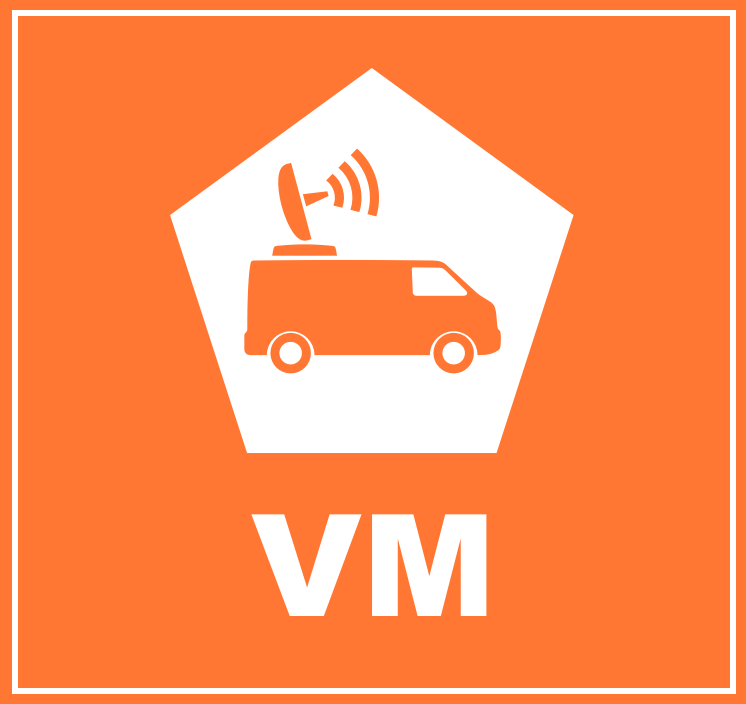 Vehicle Mounted Fast Response Gas Analyzers (VM)
Vehicle Mounted Fast Response Gas Analyzers (VM)In some cases it may be advantageous to sample and analyze the atmosphere while moving along a course or a road using an electric vehicle. The gas inlet is attached to a mast extending vertically from the vehicle leading to a fast response analyzer to accommodate high precision analysis of gases. The vehicle mounted analyzer is of particular advantage when measuring for CH4 gas released from wetlands, lakes and rivers in the project area.
Additional Reading
Lee, Joseph K., Andreas Christen, Rick Ketler, and Zoran Nesic. “A mobile sensor network to map carbon dioxide emissions in urban environments.” Atmospheric Measurement Techniques 10, no. 2 (2017): 645.
Tsai, Tracy R., Kendrick Du, and Bill Stavropoulos. “New system for detecting, mapping, monitoring, quantifying and reporting fugitive gas emissions.” The APPEA Journal 57, no. 2 (2017): 561-566.
 Unmanned Aerial Systems (UAS) and Remote Sensing (RS)
Unmanned Aerial Systems (UAS) and Remote Sensing (RS) A variety of UAS’s may be used in a project to record the status of forest conditions at low altitude (e.g., ~1,000 ft) on a routine basis, when a disturbance has occurred (e.g., hurricane, drought, timber operations) or for surveillance of forest activity by landowners or others accessing the site. Typical capabilities may include spectral imaging of the tree canopy and mapping functions to reveal differences along the flight path over time. In addition, UAS’s may also carry miniaturized gas sensors for CO2, CH4 and other atmospheric gases. The use of remote sensing (RS) for ecological research is well documented covering spectral bands for normalized difference vegetation index (NDVI), leaf evapotranspiration and other features of the biotic and abiotic project area.
A variety of UAS’s may be used in a project to record the status of forest conditions at low altitude (e.g., ~1,000 ft) on a routine basis, when a disturbance has occurred (e.g., hurricane, drought, timber operations) or for surveillance of forest activity by landowners or others accessing the site. Typical capabilities may include spectral imaging of the tree canopy and mapping functions to reveal differences along the flight path over time. In addition, UAS’s may also carry miniaturized gas sensors for CO2, CH4 and other atmospheric gases. The use of remote sensing (RS) for ecological research is well documented covering spectral bands for normalized difference vegetation index (NDVI), leaf evapotranspiration and other features of the biotic and abiotic project area.
Additional Reading:
Galidaki, Georgia, Dimitris Zianis, Ioannis Gitas, Kalliopi Radoglou, Vassilia Karathanassi, Maria Tsakiri–Strati, Iain Woodhouse, and Giorgos Mallinis. “Vegetation biomass estimation with remote sensing: focus on forest and other wooded land over the Mediterranean ecosystem.” International Journal of Remote Sensing 38, no. 7 (2017): 1940-1966.
Goodbody, Tristan RH, Nicholas C. Coops, Peter L. Marshall, Piotr Tompalski, and Patrick Crawford. “Unmanned aerial systems for precision forest inventory purposes: A review and case study.” The Forestry Chronicle 93, no. 1 (2017): 71-81.
Grinand, Clovis, Guerric Le Maire, Ghislain Vieilledent, H. Razakamanarivo, Tiana Razafimbelo, and Martial Bernoux. “Estimating temporal changes in soil carbon stocks at ecoregional scale in Madagascar using remote-sensing.” International Journal of Applied Earth Observation and Geoinformation 54 (2017): 1-14.
Howell, Travis Lynn. “The Benefits and Applications of Unmanned Aerial Systems (UAS) to Natural Resources & Forest Management.” (2017).
Sanchez‐Azofeifa, Arturo, Jose Antonio Guzmán, Carlos A. Campos, Saulo Castro, Virginia Garcia‐Millan, Joanne Nightingale, and Cassidy Rankine. “Twenty‐first century remote sensing technologies are revolutionizing the study of tropical forests.” Biotropica (2017).
Sankey, Temuulen, Jonathon Donager, Jason McVay, and Joel B. Sankey. “UAV lidar and hyperspectral fusion for forest monitoring in the southwestern USA.” Remote Sensing of Environment 195 (2017): 30-43.
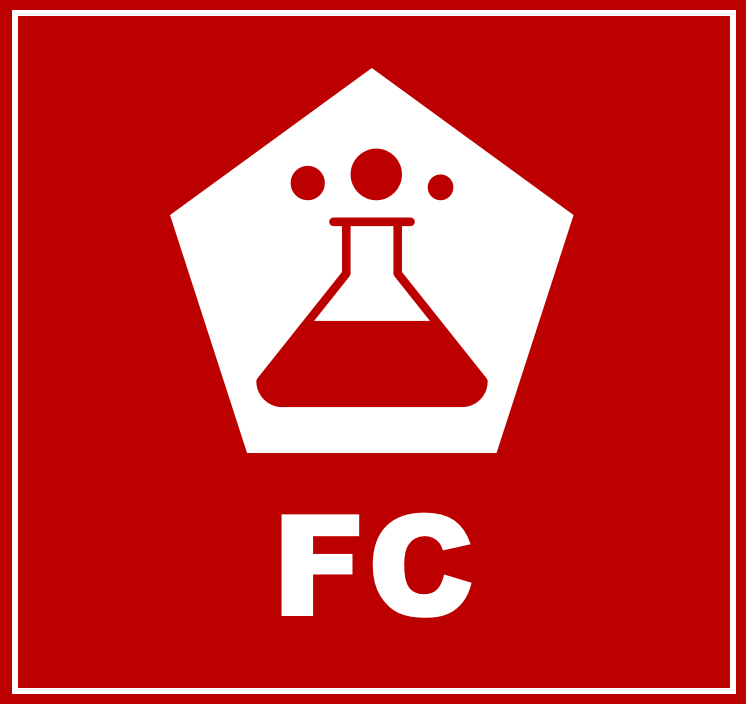 Flask Collection (FC)
Flask Collection (FC)Gas and liquid samples can be collected in specially designed flasks for analysis in the field or at a remote laboratory. Flask collection of samples will augment results for field analysis as checks on field data and for analysis of sample composition not attainable in the field. Flask collection of air for radiocarbon analysis will be undertaken at selected sites employing automated air sampling systems.
Additional Reading:
Miller, John, Scott Lehman, Chad Wolak, Jocelyn Turnbull, Gregory Dunn, Heather Graven, Ralph Keeling et al. “Initial results of an intercomparison of AMS-based atmospheric 14 CO 2 measurements.” Radiocarbon 55, no. 3 (2013): 1475-1483.
Komhyr, W. D., R. H. Gammon, T. B. Harris, L. S. Waterman, T. J. Conway, W. R. Taylor, and K. W. Thoning. “Global atmospheric CO2 distribution and variations from 1968–1982 NOAA/GMCC CO2 flask sample data.” Journal of Geophysical Research: Atmospheres 90, no. D3 (1985): 5567-5596.
The Air Sampling & Monitoring: Hermes 80 V.4A Precision Flask Package (PFP)
 Nitrous Oxide (N2O)
Nitrous Oxide (N2O)Nitrous oxide is ~ 298 times more potent as a greenhouse gas (GHG) relative to CO2. N2O has no significant sinks on land and is destroyed by chemical reactions in the upper atmosphere. Land surfaces are the main source of atmospheric N2O indicating that changes in land-use practices can modify soil emissions and influence N2O concentration in the atmosphere. The uncertainty of sources and sinks of N2O and its atmospheric lifetime limit an accurate budget. Existing data on fluxes of N2O from soils and oceans are insufficient to quantify them in detail. About half of the global N2O emissions are anthropogenic resulting from microbiological processes in soils related to agriculture and tropical forests. The importance of quantification for N2O across PαC projects in combination with CO2 and CH4 is a high priority and should add to diverse ecosystem level data for this important GHG of the tropics.

Additional Reading:
IPCC Working Group I: The Scientific Basis
https://www.ipcc.ch/ipccreports/tar/wg1/136.htm
Arias‐Navarro, Cristina, Eugenio Díaz‐Pinés, Steffen Klatt, Patric Brandt, Mariana C. Rufino, Klaus Butterbach‐Bahl, and L. V. Verchot. “Spatial variability of soil N2O and CO2 fluxes in different topographic positions in a tropical montane forest in Kenya.” Journal of Geophysical Research: Biogeosciences 122, no. 3 (2017): 514-527.
Lognoul, Margaux, Alain Debacq, Bernard Heinesch, and Marc Aubinet. “N2O eddy covariance fluxes: from field measurements to flux analysis.” (2017).
Olin, Stefan, Xu-Ri Xing, David Wårlind, Peter Eliasson, Ben Smith, and Almut Arneth. “Global terrestrial N2O budget for present and future.” In EGU General Assembly Conference Abstracts, vol. 19, p. 17872. 2017.
Upstill-Goddard, Robert C., Matthew E. Salter, Paul J. Mann, Jonathan Barnes, John Poulsen, Bienvenu Dinga, Gregory J. Fiske, and Robert M. Holmes. “The riverine source of CH 4 and N 2 O from the Republic of Congo, western Congo Basin.” Biogeosciences 14, no. 9 (2017): 2267.
Dlugokencky, E. J., A. M. Crotwell, M. Crotwell, K. A. Masarie, P. M. Lang, G. S. Dutton, and B. D. Hall. “NOAA’s Global Network of N2O Observations.” In AGU Fall Meeting Abstracts. 2014.
 Sulfur Hexaflouride (SF6)
Sulfur Hexaflouride (SF6)Emissions of sulfur hexaflouride, SF6 are virtually all of anthropogenic origin, and as such, were not part of the pre-industrial atmosphere. Estimation of global historical emissions of SF6 reveal that the primary sources originate from the electricity sector (e.g., gas insulated-switchgear, circuit breakers), the magnesium industry (primary production and die casting), the electronics industry (e.g., SF6 is used in semiconductor (chip waver) manufacturing processes), and in adiabatic property applications (e.g., tennis balls, shoe soles and truck tires). As a greenhouse gas, SF6 is ~ 23,500 times more potent relative to CO2 as warming agent. Pα will deploy SF6 analyzers on the Global Monitor Platform (GMP) for selected projects depending on feasibility of field deployment. As the demand for electricity grows as a result of population growth and growth of urban centers we can expect SF6 emissions to also increase emphasizing the importance of quantifying and limiting release of this potent GHG.

Additional Reading:
Ray, Eric A., Fred L. Moore, James W. Elkins, Karen H. Rosenlof, Johannes C. Laube, Thomas Röckmann, Daniel R. Marsh, and Arlyn E. Andrews. “Quantification of the SF6 lifetime based on mesospheric loss measured in the stratospheric polar vortex.” Journal of Geophysical Research: Atmospheres 122, no. 8 (2017): 4626-4638.
Geller, L. S., J. W. Elkins, J. M. Lobert, A. D. Clarke, D. F. Hurst, J. H. Butler, and R. C. Myers. “Tropospheric SF6: Observed latitudinal distribution and trends, derived emissions and interhemispheric exchange time.” Geophysical Research Letters 24, no. 6 (1997): 675-678.
Dullni, Edgar, Thor Endre, Yannick Kieffel, and Renzo Coccioni. “Reducing SF6 emissions from electrical switchgear.” Carbon Management 6, no. 3-4 (2015): 77-87.
 Tree Plantation
Tree Plantation Perfluorocarbon (PFC)
Perfluorocarbon (PFC)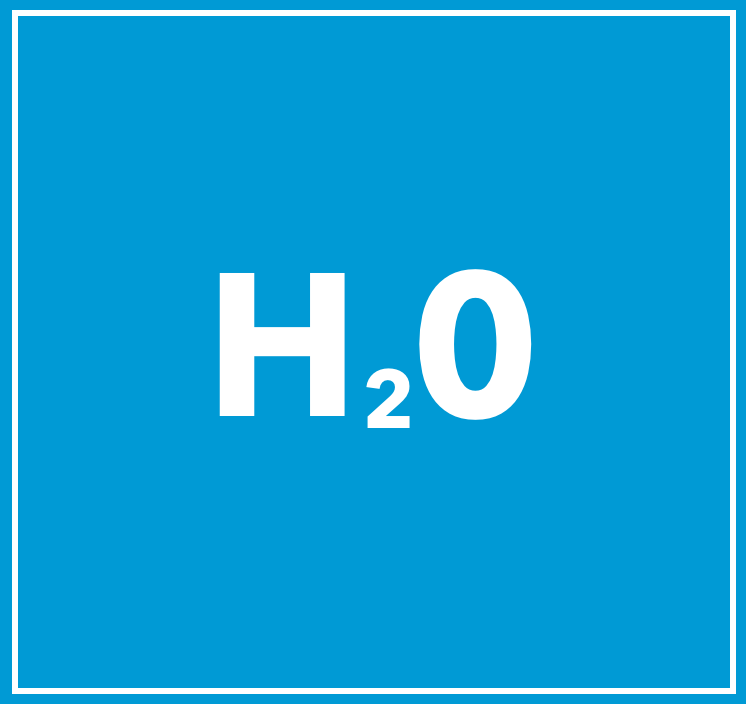 Water Vapor (H2O)
Water Vapor (H2O)Let’s describe what this means here. Sample text. Nothing but sample text. Sample, sample, sample. Text, text, text. Let’s describe what this means here. Sample text. Nothing but sample text. Sample, sample, sample. Text, text, text. Let’s describe what this means here. Sample text. Nothing but sample text. Sample, sample, sample. Text, text, text. Let’s describe what this means here. Sample text. Nothing but sample text. Sample, sample, sample. Text, text, text.
Let’s describe what this means here. Sample text. Nothing but sample text. Sample, sample, sample. Text, text, text. Let’s describe what this means here. Sample text. Nothing but sample text. Sample, sample, sample. Text, text, text.